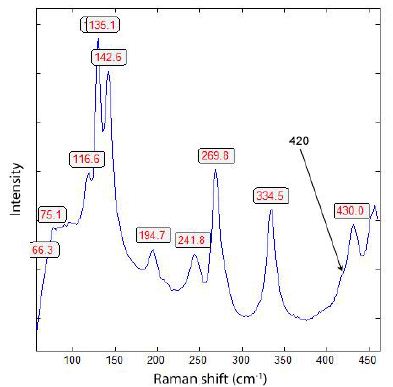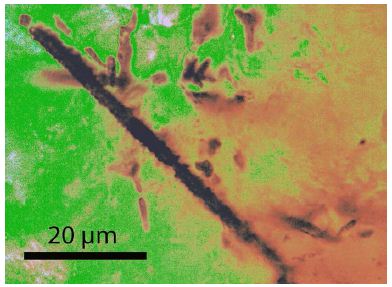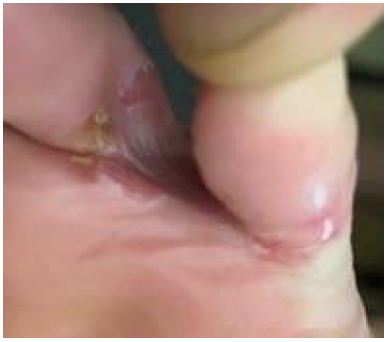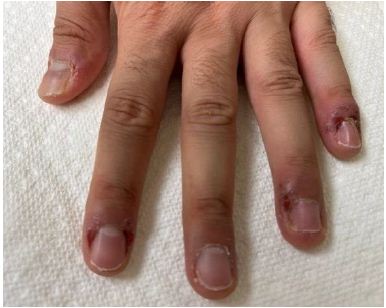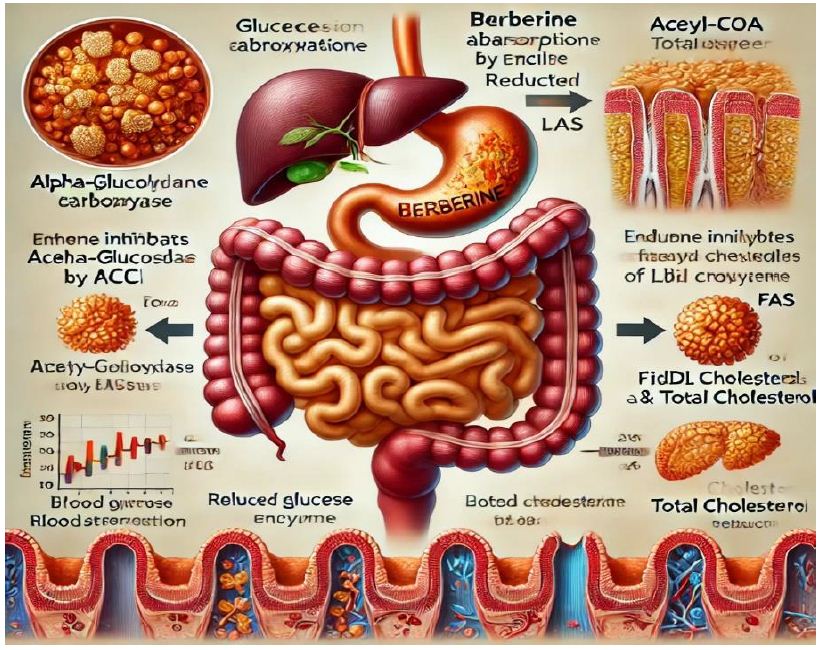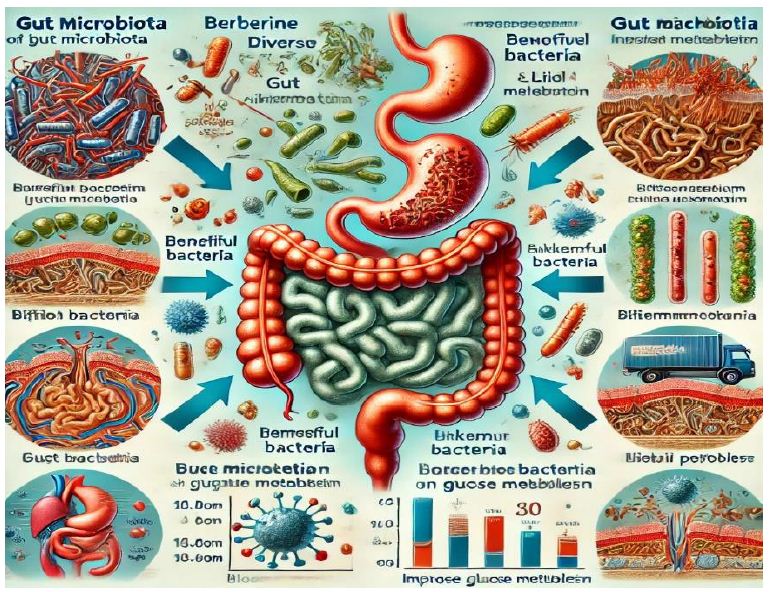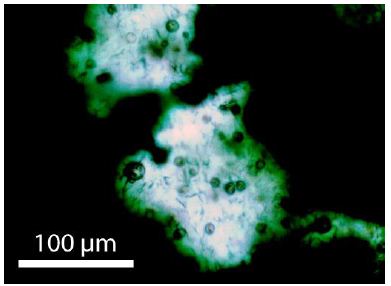DOI: 10.31038/IJNM.2024534
Abstract
Hypertension, a pervasive global health issue, poses significant risks to cardiovascular health and financial burdens on individuals and healthcare systems. We observed the impact of a lifestyle intervention, the Complete Health Improvement Program (CHIP), on blood pressure reduction among Hypertension, a pervasive global health issue, poses significant risks to cardiovascular health and financial burdens on individuals and healthcare individuals with seemingly normal levels. The pillars of a healthy lifestyle—physical activity, whole food plant-based nutrition, avoidance of harmful substances, stress management, passion, sleep, and connectedness—are examined as potential contributors to hypertension management. This study involved ten freshmen and two staff members. While statistically significant reductions in systolic and diastolic blood pressures were observed after 12 weeks of the CHIP program, no significant changes were evident at six weeks. Importantly, no substantial alterations were found in weight, BMI, total cholesterol, triglycerides, or fasting glucose levels. The results suggest that lifestyle education, exemplified by CHIP, can effectively assist individuals in lowering blood pressure. However, further research is crucial to elucidate the mechanisms through which lifestyle modifications influence blood pressure regulation. Understanding these underlying factors will contribute to tailoring interventions and addressing the rising prevalence of hypertension, enhancing overall health and well-being.
Keywords
Complete health improvement program, Hypertension, Lifestyle education
Introduction
Hypertension, commonly known as high blood pressure, is a chronic medical condition that affects millions of people worldwide. It occurs when the force of blood against the walls of the arteries is consistently too high, putting strain on the cardiovascular system. Hypertension is a major risk factor for heart disease, stroke, and other serious health complications. Moreover, it poses significant financial burdens on individuals, families, and healthcare systems. However, adopting a lifestyle that encompasses the pillars of a healthy lifestyle—physical activity, whole food plant-based nutrition, avoidance of harmful substances, stress management, passion, sleep, and connectedness—has shown promising results in managing hypertension effectively and reducing healthcare costs.
The health impacts of hypertension are far-reaching and can be severe. Prolonged high blood pressure can lead to damage of the arteries, heart, kidneys, and other vital organs. It increases the risk of heart attacks, strokes, heart failure, kidney disease, and vision problems. Furthermore, hypertension often goes undetected and uncontrolled, causing a silent deterioration of health. This silent killer can significantly reduce the quality of life and even be life-threatening if left untreated [1-4]. In addition to the health consequences, hypertension also imposes substantial financial burdens on individuals and healthcare systems [5]. The costs associated with managing hypertension include doctor visits, medications, diagnostic tests, hospitalizations, and the treatment of complications that arise from uncontrolled blood pressure. These expenses can quickly accumulate and strain personal finances, while also burdening healthcare systems with high expenditure and resource allocation.
However, there is a ray of hope in managing hypertension through the adoption of a healthy lifestyle that focuses on the pillars: physical activity, whole food plant-based nutrition, avoidance of harmful substances, stress management, passion, sleep, and connectedness. These pillars are interconnected and work synergistically to promote overall well-being and effectively manage hypertension [6-12]. Regular physical activity, such as aerobic exercises, has been proven to lower blood pressure and improve cardiovascular health. Engaging in activities like walking, swimming, or cycling for at least 30 minutes a day can have a significant impact on reducing hypertension and improving overall fitness. A whole food plant-based diet, rich in fruits, vegetables, whole grains, and legumes, has been associated with lower blood pressure levels. This dietary approach emphasizes the consumption of nutrient-dense foods while minimizing processed foods, saturated fats, and sodium, which contribute to hypertension. Some substances have been shown to elevate blood pressure. Alcohol consumption is shown to produce an acute biphasic effect on blood pressure [13]. Daily consumption of alcoholic beverages is associated with a higher instance of hypertension [13-18]. Cigarette smoking is also linked to hypertension [19-22]. Even passive smoking is associated with elevated blood pressure [23-27]. Additionally, alcohol consumption heightens the effects of smoking on hypertension [28-32]. Stress management techniques, such as meditation, deep breathing exercises, and yoga, help reduce the negative effects of stress on blood pressure. Chronic stress can contribute to the development and exacerbation of hypertension, so adopting stress management practices is crucial for managing blood pressure effectively [33,34]. Finding and pursuing one’s passion in life can provide a sense of purpose and fulfillment, which positively influences overall health. Engaging in activities that bring joy and satisfaction can reduce stress levels and indirectly impact hypertension management. It is particularly beneficial in managing occupational stress. Adequate sleep is essential for maintaining optimal health and managing hypertension. Poor sleep quality or insufficient sleep has been linked to higher blood pressure levels. Establishing a consistent sleep routine and creating a sleep-conducive environment are vital for individuals with hypertension. Finally, fostering social connections and maintaining a strong support network can contribute to better hypertension management. Positive social interactions and emotional support have been shown to reduce stress levels and promote overall well-being. By embracing the basic pillars of a healthy lifestyle, individuals can effectively manage hypertension and potentially reduce the need for costly medical interventions. Moreover, adopting these lifestyle practices can have a preventive effect, reducing the risk of developing hypertension in the first place. The long-term health benefits and potential cost savings associated with a healthy lifestyle make it a compelling strategy for individuals, families, and healthcare systems to combat the impacts of hypertension.
The Complete Health Improvement Program (CHIP) developed by Hans Diehl is a comprehensive lifestyle intervention designed to promote optimal health and well-being [35-47]. This program encompasses a holistic approach that focuses on making sustainable changes in diet, physical activity, stress management, and social support. With its evidence-based principles and practical strategies, CHIP has emerged as a highly effective program for improving health outcomes and reducing the burden of chronic diseases. The CHIP program has been proven to have significant positive effects on various health parameters. Participants often experience improvements in weight management, blood pressure control, cholesterol levels, blood sugar regulation, and overall cardiovascular health. By adopting healthier eating habits, engaging in regular physical activity, and effectively managing stress, individuals can achieve a range of health benefits and reduce the risk of chronic diseases such as diabetes, heart disease, and stroke.
Materials and Methods
Complete Health Improvement Program (CHIP). The program consisted of 18 sessions that were delivered by certified facilitators. The participants met twice a week for six weeks and then once a week for six weeks. Each session included a video presentation, facilitated discussions, and food samples. The food was prepared by a local café, following whole food, plant-based recipes provided by the facilitators. Subjects. Ten freshmen and two staff from the University of Minnesota Rochester (UMR) participated. Ten were females. One was Hispanic, three Caucasian, and eight African American. Biometrics and Questionnaires. Biometrics including height, weight, BMI, systolic and diastolic pressures, fasting glucose, triglycerides, and total cholesterol were measured at weeks 1, 6, and 12. The Perceived Stress Scale (PSS) questionnaire was filled out at weeks 1 and 12.Statistical Analysis. For biometrics, a one-way ANOVA with repeated measures was conducted to compare the three time periods for each of the physical measurements. This was performed with a protected F-test (p-value < 0.05) being the threshold for further statistical analysis. Tukey’s HSD method was used for post hoc multiple comparisons whenever the treatment effect was significant. For PSS, a paired t-test was conducted to compare the pre and post scores.
Results
Statistical analyses of biometrics were shown in Table 1. Both systolic and diastolic blood pressures were significantly reduced after 12 weeks but not six weeks. There was no statistical difference between before and after the program.
Discussion
The statistical analyses of biometrics are presented in Table 1, providing a comprehensive overview of the data. The focus of the study was on the systolic and diastolic blood pressures, and the results revealed interesting findings. After a duration of 12 weeks, both systolic and diastolic blood pressures demonstrated a significant reduction. However, it is worth noting that this notable improvement was not observed at the six-week mark. Furthermore, the statistical analysis conducted to compare the measurements before and after the program indicated that there was no significant difference between these two time points. This suggests that the program did not have a discernible impact on the biometric measurements being examined. The absence of statistical significance between the pre- and post- program measurements implies that any changes observed in the biometric data were likely due to other factors or natural fluctuations. It is important to interpret these findings with caution, considering the limitations of the study and the potential influence of confounding variables that were not accounted for in the analysis. These results shed light on the potential benefits of stress management programs in a college setting, particularly in terms of promoting healthier coping mechanisms. Although the study did not yield the expected changes in biometric markers, the students’ self-reported ability to handle stress suggests that the program had a positive impact on their overall well- being and stress management skills.
Table 1: Statistical Analysis of Biometrics
|
Measurement
|
Time |
N |
Mean ± std error |
p-value
|
| Weight |
1
|
12 |
153 ± 10.7 |
0.597 |
| |
2 |
9 |
153 ± 10.8 |
|
| |
3
|
6 |
154 ± 10.8 |
|
|
BMI
|
1 |
12 |
25.1 ± 1.5 |
0.468
|
| |
2
|
9 |
25.2 ± 1.5 |
|
| |
3 |
6 |
25.5 ± 1.5
|
|
| Systolic Blood Pressure |
1
|
12 |
119 ± 2.4A |
<0.0001* |
| |
2 |
9 |
119 ± 2.6 A |
|
| |
3
|
6 |
97 ± 2.8 B |
|
|
Diastolic Blood Pressure
|
1 |
12 |
71.3 ± 2.3 A |
0.014*
|
| |
2
|
9 |
73.8 ± 2.6 A |
|
| |
3 |
6 |
62.2 ± 3.1 B
|
|
| Glucose Level |
1
|
12 |
90.4 ± 10.6 |
0.157 |
| |
2 |
8 |
94.8 ± 10.7
|
|
Data expressed as least squares mean ± standard error. Different superscript letters indicate significance for time within each physical measurement. *Statistical significance.
Conclusion
The findings from this study indicate that lifestyle education, as demonstrated through the Comprehensive Health Improvement Program (CHIP), can effectively assist individuals with hypertension in lowering their blood pressure. The results suggest that equipping individuals with knowledge and strategies related to lifestyle modifications can lead to positive changes in their blood pressure levels. However, it is important to acknowledge that further research is necessary to delve deeper into the mechanisms through which lifestyle education contributes to blood pressure reduction. The study did not reveal significant differences in other biometric variables, such as weight, total cholesterol, triglycerides, or fasting glucose, nor did it show substantial changes in stress levels following the education program. Therefore, additional investigations are required to elucidate the precise pathways by which lifestyle education influences blood pressure. By conducting more comprehensive studies, researchers can explore potential mediators and confounding factors that may be associated with the observed blood pressure reduction. These investigations could involve examining variables such as dietary patterns, physical activity levels, sleep quality, and other lifestyle factors that might be influenced by the education program. Understanding these underlying factors would enhance our knowledge of how lifestyle interventions impact blood pressure regulation and provide insights into the most effective strategies for hypertension management. In conclusion, while the current study highlights the potential efficacy of lifestyle education in lowering blood pressure among individuals with seemingly normal levels, further research is warranted to unravel the intricate mechanisms involved. Such studies will aid in refining the design and implementation of lifestyle education programs, allowing for more tailored and targeted interventions for individuals with hypertension. Ultimately, this research will contribute to the development of evidence-based practices that can effectively address the rising prevalence of hypertension and improve the overall health and well-being of individuals.
Acknowledgement
The authors wish to extend their gratitude to Silas Bergen, PhD, and his team at Winona State University for conducting the statistical analyses. Funding was supported by the Lotus Health Foundation and the George Family Foundation.
References
- Correia ETO, Mechanick JI, Jorge AJL, Leticia MDB, Maria LGR, et (2023) The hypertension-based chronic disease model in a primary care setting. Int J Cardiol Cardiovasc Risk Prev. 18. [crossref]
- Katsimardou A, Imprialos K, Stavropoulos K, Sachinidis A, Doumas M, et (2020) Treatment strategies for hypertension in patients with type 1 diabetes. Expert Opin Pharmacother.21: 1241-1252.
- Mente A, Dehghan M, Rangarajan S, Martin O’D, Weihong H, et al. (2023) Diet, cardiovascular disease, and mortality in 80 Eur Heart J. Jul 21; 44: 2560- 2579. [crossref]
- Islam SMS, Daryabeygi-Khotbehsara R, Ghaffari MP, Riaz U, Lan G, et al. (2023) Burden of Hypertensive Heart Disease and High Systolic Blood Pressure in Australia from 1990 to 2019: Results From the Global Burden of Diseases Heart Lung Circ. [crossref]
- Gheorghe A, Griffiths U, Murphy A, Legido-Quigley H, Lamptey P, et al. (2018) The economic burden of cardiovascular disease and hypertension in low- and middle- income countries: a systematic BMC Public Health. 18 . [crossref]
- Debela DB, Dhaba B, Shumi G, Abdulnasir A, Gemechu G, et (2021) Effect of an Educational Intervention on Lifestyle Modification of Patients With Hypertension at Bishoftu General Hospital, Ethiopia. Prev Chronic Dis. [crossref]
- Hanssen H (2023) Lifestyle recommendations as treatment for arterial hypertension: a time to Eur J Prev Cardiol. 30: 95-97. [crossref]
- Hoshide S, Mogi M, Kario K (2023) The importance of lifestyle modification for hypertension in Asia. Hypertens Res. 46: 815-816. [crossref]
- Karatzi K, Manios Y (2021) The Role of Lifestyle, Eating Habits and Social Environment in the Prevention and Treatment of Type 2 Diabetes and Nutrients.13. [crossref]
- Kodela P, Okeke M, Guntuku S, Lingamsetty SSP, Slonovschi E (2023) Management of Hypertension With Non-pharmacological Interventions: A Narrative Review. Cureus. 15. [crossref]
- Krishnamoorthy Y, Nagarajan R, Murali S (2023) Effectiveness of multiple combined lifestyle interventions in reducing blood pressure among patients with prehypertension and hypertension: a network meta-analysis. J Public Health (Oxf). 45: e319-e331. [crossref]
- Valenzuela PL, Carrera-Bastos P, Galvez BG, Gema RH, José MO et al. (2021) Lifestyle interventions for the prevention and treatment of hypertension. Nat Rev Cardiol. 18: 251-275. [crossref]
- Fuchs FD, Fuchs SC (2021) The Effect of Alcohol on Blood Pressure and Curr Hypertens Rep. 23. [crossref]
- Asowata OJ, Okekunle AP, Adedokun B, Akpa OM (2023) Alcohol use patterns and hypertension among adults in the United States: findings from the 2015-2016 NHANES data. Public Health. 225: 327-335. [crossref]
- Fuchs FD, Chambless LE, Whelton PK, Nieto FJ, Heiss G (2001) Alcohol consumption and the incidence of hypertension: The Atherosclerosis Risk in Communities Hypertension. 37: 1242-1250. [crossref]
- Harris E (2023) Even Without Hypertension, Daily Alcohol May Increase Blood JAMA. 330.
- Steffens AA, Moreira LB, Fuchs SC, Wiehe M, Gus M, et al. (2006) Incidence of hypertension by alcohol consumption: is it modified by race? J 24: 1489- 1492. [crossref]
- Vacca A, Bulfone L, Cicco S, Gabriele B, Andrea DP, et ( 2023) Alcohol Intake and Arterial Hypertension: Retelling of a Multifaceted Story. Nutrients.15. [crossref]
- Reinikainen J, Harkanen T, Tolonen H (2023) Projections for obesity, smoking and hypertension based on multiple imputation. Scand J Public Health. 51: 829-834. [crossref]
- Song S, Lee HA, Kim Y, Jeon BK, Moon CM, et al. (2023) Dynamic changing smoking habits and cardiovascular events in patients newly diagnosed with hypertension, diabetes, or dyslipidemia: a national cohort study. Front Cardiovasc Med. 10. [crossref]
- Wagai GA, Jeelani U, Beg MA, Romshoo GJ (2023) Relationship between hypertension and smoking: A preliminary study in South Kashmiri population of J&K. J Family Med Prim 12(5): 958-961. [crossref]
- Zhang DY, Huang JF, Kang YY, Yu Dou, Yan Lun S et (2020) The prevalence of masked hypertension in relation to cigarette smoking in a Chinese male population. J Hypertens. 38: 1056-1063. [crossref]
- Wu L, Yang S, He Y, Miao Liu, Yiyan Wang, et al. (2017) Association between passive smoking and hypertension in Chinese non-smoking elderly Hypertens Res. 40: 399-404. [crossref]
- Tamura T, Kadomatsu Y, Tsukamoto M, Rieko O, Tae S, et (2018) Association of exposure level to passive smoking with hypertension among lifetime nonsmokers in Japan: a cross-sectional study. Medicine (Baltimore). 97. [crossref]
- Makris TK, Thomopoulos C, Papadopoulos DP, Athanassios B, Ourania P, et al. (2009) Association of passive smoking with masked hypertension in clinically normotensive nonsmokers. Am J Hypertens. 22: 853-859. [crossref]
- Pierdomenico SD (2009) Passive smoking and masked Am J Hypertens. 22.
- Akpa OM, Okekunle AP, Asowata JO, Adedokun B (2021) Passive smoking exposure and the risk of hypertension among non-smoking adults: the 2015-2016 NHANES Clin Hypertens. 1. [crossref]
- Palatini P, Mos L, Saladini F, Olga V, Claudio F, et al. (2023) Both Moderate and Heavy Alcohol Use Amplify the Adverse Cardiovascular Effects of Smoking in Young Patients with Hypertension. J Clin Med.12. [crossref]
- Nagao T, Nogawa K, Sakata K, Hideki M, Kotaro M, et (2021) Effects of Alcohol Consumption and Smoking on the Onset of Hypertension in a Long-Term Longitudinal Study in a Male Workers’ Cohort. Int J Environ Res Public Health. 18. [crossref]
- Singh PK, Dubey R, Singh L, Nishikant S, Chandan K, et al. (2022) Mixed Effect of Alcohol, Smoking, and Smokeless Tobacco Use on Hypertension among Adult Population in India: A Nationally Representative Cross-Sectional Study. Int J Environ Res Public Health. 19. [crossref]
- Gupta R, Sharma S, Gupta VP, Gupta KD (1995) Smoking and alcohol intake in a rural Indian population and correlation with hypertension and coronary heart disease J Assoc Physicians India. 43: 253-258. [crossref]
- Wong DR, Willett WC, Rimm EB (2007) Smoking, hypertension, alcohol consumption, and risk of abdominal aortic aneurysm in men. Am J Epidemiol. 165: 838-845. [crossref]
- Pickering TG (2001) Effects of stress and behavioral interventions in hypertension–the effects of smoking and nicotine replacement therapy on blood pressure. J Clin Hypertens (Greenwich). 3: 319-21.
- Gu Z, Qu Y, Wu H (2022) The Interaction between Occupational Stress and Smoking, Alcohol Drinking and BMI on Hypertension in Chinese Petrochemical Workers. Int J Environ Res Public Health. 19. [crossref]
- Davis JL (2021) Evaluating the Influence of the Complete Health Improvement Program (CHIP) on Blood Glucose, Blood Pressure, and J Lifestyle Med.11: 33-37. [crossref]
- Kent L, Morton D, Hurlow T, Rankin P, Hanna A, Diehl H (2013) Long-term effectiveness of the community-based Complete Health Improvement Program (CHIP) lifestyle intervention: a cohort study. BMJ Open. 3.
- Kent L, Morton D, Rankin P, et (2013) The effect of a low-fat, plant-based lifestyle intervention (CHIP) on serum HDL levels and the implications for metabolic syndrome status – a cohort study. Nutr Metab (Lond). 10. [crossref]
- Kent LM, Grant RS, Watts G, Morton DP, Rankin PM, et (2018) HDL subfraction changes with a low-fat, plant-based Complete Health Improvement Program (CHIP). Asia Pac J Clin Nutr.27: 1002-1009. [crossref]
- Kent LM, Morton DP, Rankin PM, Gobble JE, Diehl HA (2015) Gender differences in effectiveness of the Complete Health Improvement Program (CHIP). J Nutr Educ Behav. 47: 44-52.
- Kent LM, Morton DP, Rankin PM, Mitchell BG, Chang E, et (2014) Gender differences in effectiveness of the Complete Health Improvement Program (CHIP) lifestyle intervention: an Australasian study. Health Promot J Austr.25: 222-229. [crossref]
- Kent LM, Morton DP, Ward EJ, Rankin PM, Ferret RB, et (2016) The Influence of Religious Affiliation on Participant Responsiveness to the Complete Health Improvement Program (CHIP) Lifestyle Intervention. J Relig Health. Oct;55(5): 1561-73. [crossref]
- Kotekal D, Worley M, Patel H, Jensen L, Dogbey GY, Drozek D (2019) Effect of Participation with Accompanying Household Member in the Complete Health Improvement Program in Appalachia. Adv Prev Med. [crossref]
- Leibold C, Shubrook JH, Nakazawa M, Drozek D (2016) Effectiveness of the Complete Health Improvement Program in Reducing Risk Factors for Cardiovascular Disease in an Appalachian J Am Osteopath Assoc. 116: 84-91. [crossref]
- Morton D, Rankin P, Kent L, Dysinger W (2016) The Complete Health Improvement Program (CHIP): History, Evaluation, and Am J Lifestyle Med. 10: 64-73. [crossref]
- Morton D, Rankin P, Kent L, Rex S, Wayne D, et al. (2014) The Complete Health Improvement Program (CHIP) and reduction of chronic disease risk factors in Canada. Can J Diet Pract Res. 75: 72-77. [crossref]
- Morton DP, Rankin P, Morey P, Lillian K, Trevor H, et al. et al. (2013) The effectiveness of the Complete Health Improvement Program (CHIP) in Australasia for reducing selected chronic disease risk factors: a feasibility N Z Med J.126: 43-54. [crossref]
- Remy C, Shubrook JH, Nakazawa M, Drozek D (2017) Employer-Funded Complete Health Improvement Program: Preliminary Results of Biomarker Changes. J Am Osteopath Assoc.117: 293-300. [crossref]
